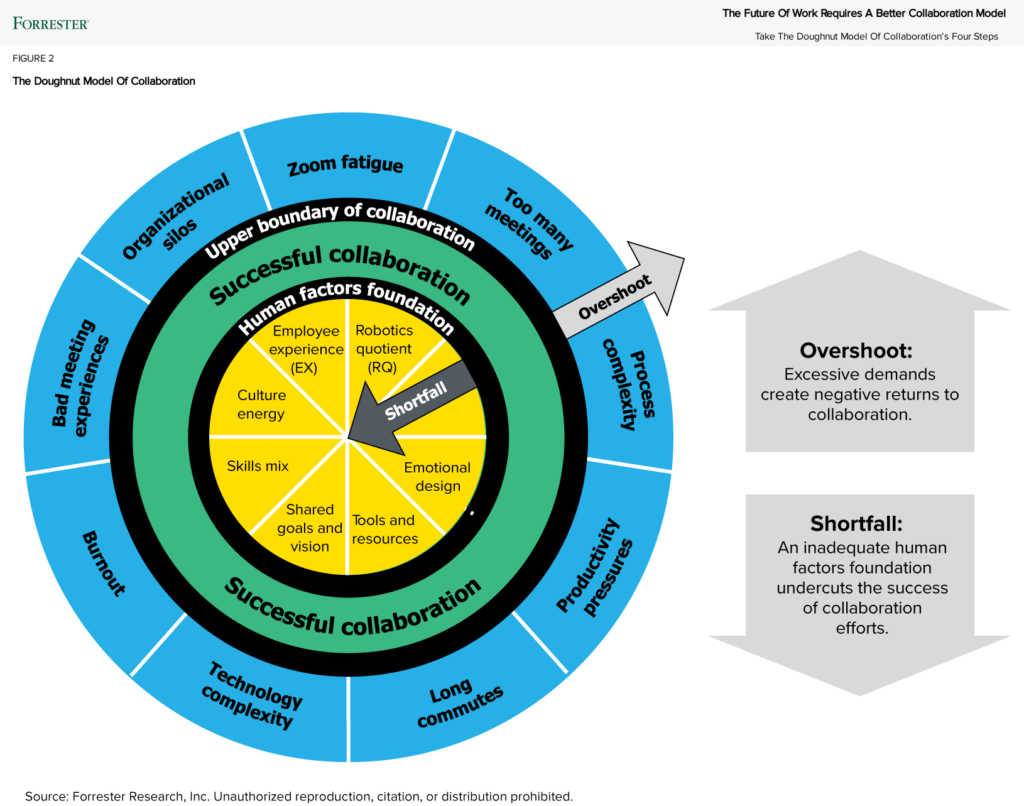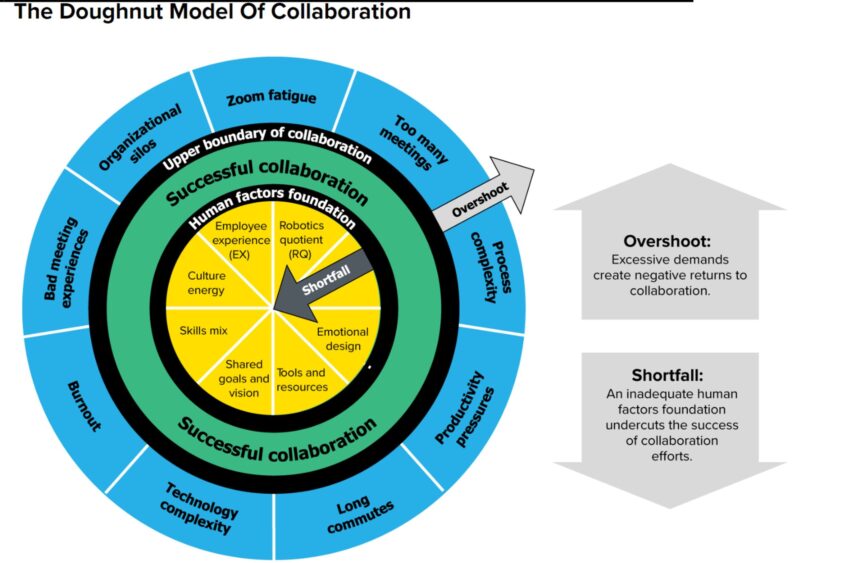Effective collaboration is harder than ever. You read that right: Despite all the advances in collaboration technologies in recent years, the complexities of enabling successful collaboration continue to mount. Our new report helps clients contend with these escalating challenges. Consider just two of the major forces reshaping collaboration in real time:
- Hybrid work is introducing new challenges. We’ve written extensively about the messy middle of hybrid. Hybrid has clearly won in the marketplace in the US; leaders nearly unanimously tell us that in-person collaboration remains crucial to their success. But simply bringing people back to the office — which remains a struggle, with low adherence rates — doesn’t by itself lead to better collaboration and, in some cases, can make it worse. You need to design an intentional hybrid work strategy that incorporates punctuated moments of in-person collaboration, new cultural norms, and flexibility. It’s harder than it looks and requires thoughtful planning and careful attention to cultural signals.
- Generative AI is coming, and it will upend collaboration. AI is coming to collaboration and productivity tools in a big way via Microsoft 365 Copilot, Google’s Bard, and other generative AI solutions. Yesterday, Microsoft demoed how its Copilot will allow Teams users to catch up with long messaging conversations, extracting key takeaways and the viewpoints of different team members. It’s stunning stuff, yet it comes with risks of its own and requires human foundations to make it work.
The Doughnut Model Of Collaboration Will Help You Develop Solutions
Improving collaboration isn’t as simple as writing a check to purchase the latest collaboration technology. As the cofounder of meeting management software vendor Sherpany told us, “The functionalities and technologies that you need to make a meeting digital don’t make the meeting better by themselves. It’s fundamentally a human problem.”

Mastering collaboration requires a new way of identifying, framing, and addressing the challenges. Enter Forrester’s doughnut model of collaboration — yes, the doughnut model. We were inspired by doughnut economics, originally developed to analyze the social foundations and ecological ceiling of a healthy environment. We found that the approach handily applies collaboration, too. With our model, you can analyze:
- Shortfalls in human factors foundations. Inside the doughnut lie foundations, without which you come up short on collaboration outcomes. They’re human factors, and successful collaboration rests on several of them, including creating a positive employee experience, having the right tools and resources, and developing shared goals and visions, among others.
- Overshoots from excessive demands. Outside the doughnut lurks the overshoot, where employees are subjected to excessive demands on their time and attention. Pushing employees into too many meetings, bad meeting experiences, long commutes, or even burnout will undermine their ability to collaborate.
- Success when you land on the doughnut itself. The doughnut itself — the green ring in our figure — is where you want to be. It’s a Goldilocks zone in which you’re supporting collaboration by improving the human factors that underpin its success while not placing excessive demands on employees that yield diminishing, and eventually negative, returns. To get there, we offer a four-step methodology.
Take Four Steps To Develop Your Collaboration Strategy
In an ideal world, you’d strengthen all the human-factor foundations at your organization. But the world isn’t ideal; you have limited resources and must pick and choose your battles. So you need to apply the doughnut model to specific collaboration problems. Our four-step methodology helps you:
- Develop your problem statement.
- Identify two related overshoot concerns from the overshoot section of the doughnut.
- Target one to two human-factor foundations from the human factors section of the doughnut.
- Convene a structured-collaboration working group to make improvements.
Solving collaboration problems at your organization isn’t a simple or quick exercise, but following our methodology, you can effectively identify, frame, and address these challenges. To proceed:
J. P. Gownder is a vice president and principal analyst on Forrester’s Future of Work team.








